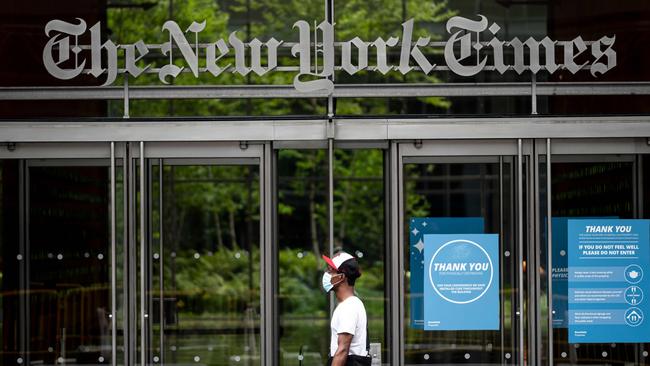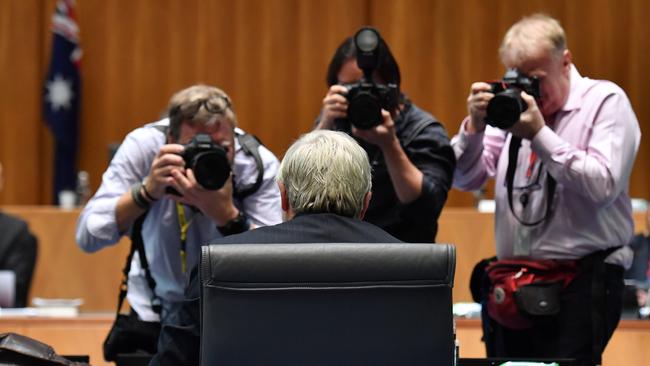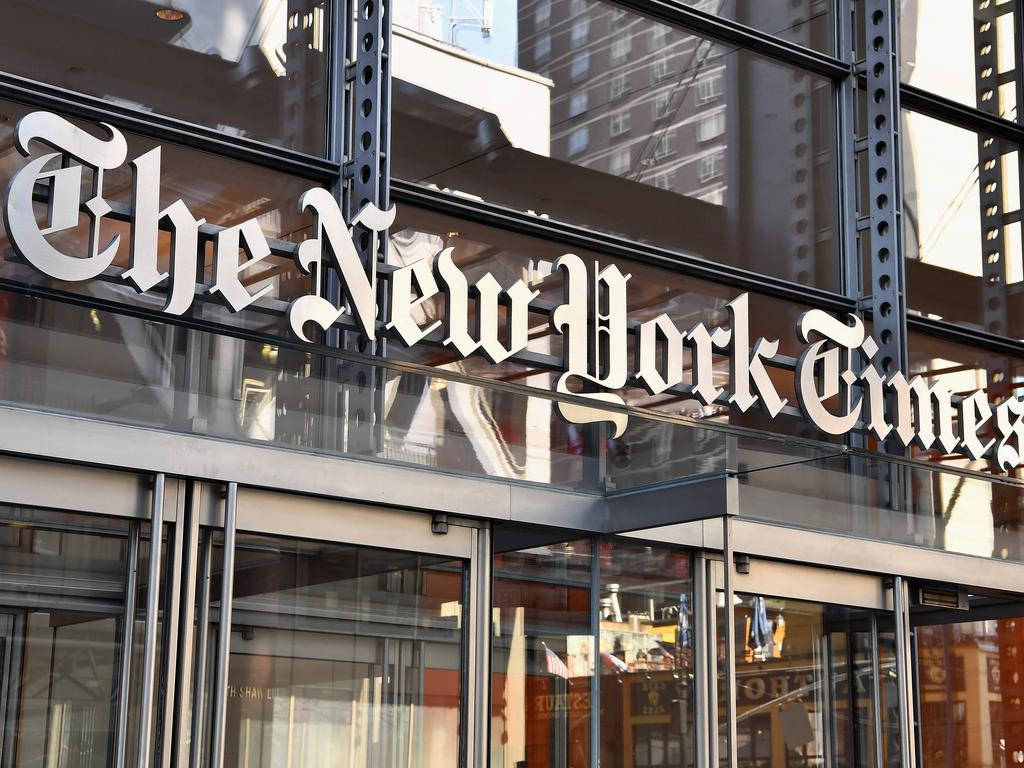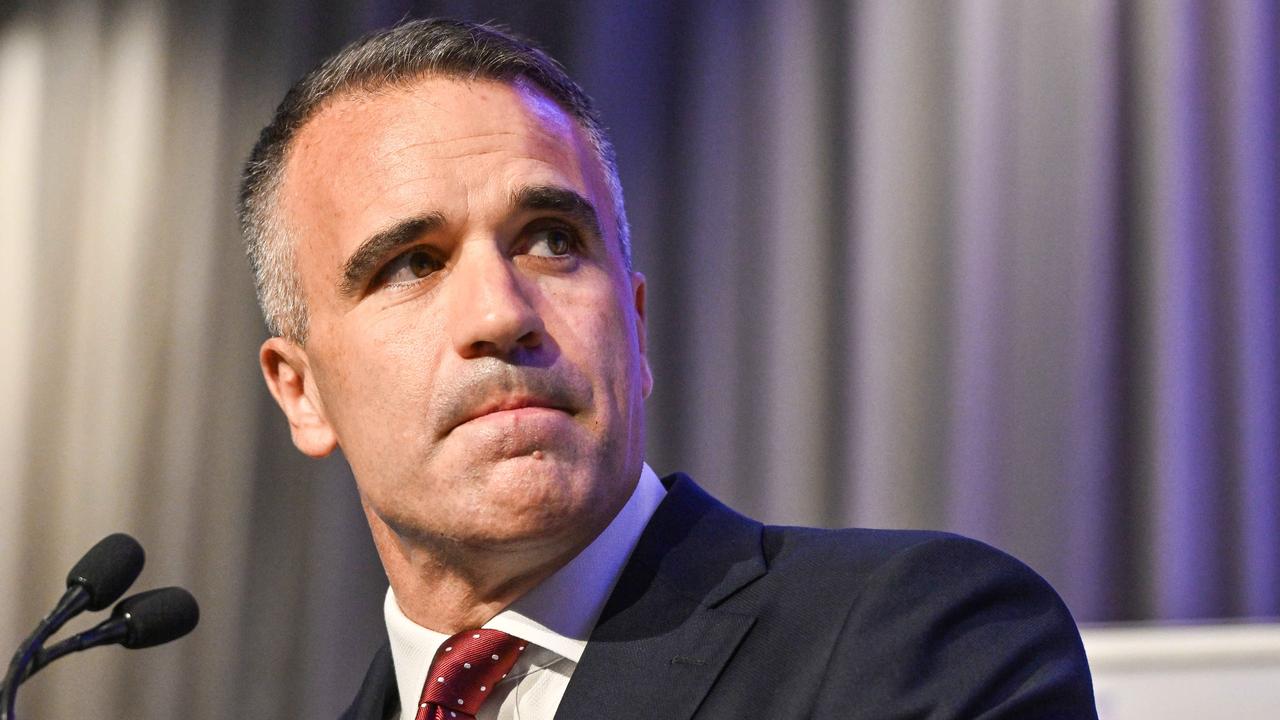
Media critics such as former prime ministers Kevin Rudd and Malcolm Turnbull and the ABC’s Media Watch use it against Rupert Murdoch’s Fox News and Sky News. Yet Trump used it against left-wing sources such as CNN, MSNBC, The New York Times and The Washington Post.
Fox News will have to wear it for a while after some of its hosts amplified Trump’s election fraud comments after the November 3 presidential poll. Three Fox hosts and the network are the subject of a $US2.7bn ($3.4bn) lawsuit from Smartmatic, a company Trump’s lawyers Rudy Giuliani and Sidney Powell claimed was involved in electronic voting fraud. It turns out Smartmatic technology was used in only a single county in California.
Up-ending the meaning of “fake news” is politically self-serving — the biggest purveyors in the Trump era were the Times and the Post which peddled the Russiagate “conspiracy theory”. Pieces by Pulitzer Prize winner Glenn Greenwald on Substack and Martin Gurri on New York’s City Journal focus on how the Times lost its way battling Trump.
Gurri, a geopolitical analyst, expert in new media and former intelligence officer, blames the changing business model — paid digital content — for the Times’s collapse into “post-journalism”. At the height of the 2016 presidential campaign as its revenue was collapsing, “the paper began to sell what was in effect a creed, an agenda, to a congregation of like-minded souls”.
“The new business model required a new style of reporting … its language aimed to commodify polarisation and threat: journalists had to scare the audience to make it donate.”
It echoes criticism by Rudd and Turnbull of News Corp papers here. Two points: media polarisation is happening all around the world and criticism by the ex-PMs is anti-democratic. Why wouldn’t many News Corp products (news.com.au is an exception) pitch themselves at the centre-right? Parties of the centre-right have won federal elections here for all but six years since 1996. The newspapers sit where most Australians sit, unlike Rudd and Turnbull.

Back to New York. Gurri says the 2016 Trump election was “a moment of profound disorientation … for the Times”. Within weeks, it and the Post “connected the Trump campaign with fake news on Facebook planted by Russian operatives”. As this column has argued, Russiagate was a hoax. The Russians did try to interfere in the election but there was no link between Trump and Russian President Vladimir Putin. Trump did everything possible in the Ukraine, Iran, Venezuela and with sanctions to damage Putin.
Gurri says between 2016 and the Mueller report in 2019, the Times published 3000 pieces on Russiagate. Yet Mueller found no evidence of collusion, a profound failure for the Times.
It was also a failure for our own ABC which had published three hours of Four Corners under the banner “The Story of the Century”. The ABC’s main source, Obama security chief James Clapper, had privately testified to congress a year before his Four Corners interviews that he had seen no evidence Trump colluded with Russia.
Yet despite the anguish in the Times newsroom at Mueller’s report, the Times’s strategy had been a commercial success. Once stagnant digital subscriptions had nearly doubled in Trump’s first year and reached six million last August, six times the subscriber figure at the time of the 2016 election.
Times editor-in-chief Dean Baquet said Mueller caught the paper “a tiny little bit flat-footed”. But given its commercial success, Baquet hit on a tweak post-Russiagate. He proposed to cover “race and class in a deeper way than we have for years”.
Black Lives Matter was the catalyst but it did not all go smoothly as the paper’s Twitter warriors clashed with its editors. Opinion editor James Bennet was sacked last June for publishing a piece by Arkansas senator Tom Cotton calling on Trump to use the military to quell unrest at BLM demonstrations following the death of George Floyd in Minneapolis on May 25.

Wrote Gurri: “The day after the Cotton oped appeared online, Times employees sent a letter expressing ‘deep concern’ over the piece. (The letter said) ‘Choosing to present this point of view without added context leaves members of the American public … vulnerable to harm’ while also jeopardising ‘our reporters’ ability to work safely and effectively’.”
Gurri said the authors of the letter also assumed that “the duty of the newspaper was less to inform than to protect such ‘vulnerable’ readers from harmful opinions. By allowing Cotton in the tent, the Times had failed its readership.”
Gurri calls such thinking “post-journalism”, a term coined by media academic Andrey Mir. Editors here might call it unabashed political activism that effectively gave the Twitter accounts of young staff power over their editors.
Greenwald, founder of The Intercept and winner of the 2014 Pulitzer Prize for the Edward Snowden National Security Agency leaks story for the Guardian, picks up the thread at the Times. He publishes on Substack now after quitting The Intercept over its failure to cover the Hunter Biden laptop story in the lead-up to the election.
Criticising the new “journalistic tattletale” culture of the Times, Greenwald explains how a newsroom revolt forced out one of the paper’s most accomplished reporters, science writer Donald McNeil, on February 5 this year. Two years earlier McNeil had used the “N word”. It was not at work or in anything he wrote, but in answer to a question about the word on a field trip for high school kids to Peru. Seriously.
Baquet, himself African-American, investigated complaints about the incident, concluding “it did not appear to me that his intentions were hateful or malicious”. McNeil’s co-workers demanded more. “Our community is outraged and in pain,” said a letter signed by 150 staff.
McNeil wrote a grovelling apology and left his job after 45 years, including “Covid reporting over the last year that the paper had submitted for a Pulitzer Prize”. In 2002 McNeil won first prize “from the National Association of Black Journalists for excellence in his reporting on how the AIDS crisis was affecting Africa”.
It’s newsroom as kindergarten. But it gets worse. Greenwald bells the cat on the Times’s “tattletale” new media round. Its three staff are charged with infiltrating social media chatrooms and apps. The aim is to out people who say offensive things in cyberspace. Greenwald calls it “school hall monitoring” and links it to the increasing willingness of big tech to censor stories.
It paints a worrying picture of a new generation of reporters who seem more committed to stopping free speech than supporting it. “The overarching rule of liberal media circles (now) … is that you are free to accuse anyone who deviates from liberal orthodoxy of any kind of bigotry … just smear them as racist, misogynist, homophobe, transphobe … without the slightest need for evidence.”
This is the sort of journalism our “market failure” national broadcaster is falling into. ABC management should read Gurri and Greenwald, as should Rudd and Turnbull.








Left-wing journalists have flipped former president Donald Trump’s use of the term “fake news”.